How to Nail Your Author Headshot (with Examples)
How important your author headshot? If you answered “not much,” think again! Readers and media pros make make a lot of inferences just from your portrait. A great headshot helps your audience deduce your unique personality and connect with you on a more personal level.
In this article, you will learn all the basics that will help you take an impressive author headshot that boosts your brand and sticks to your readers’ retinas. We will also give you tips about how to communicate effectively with your photographer, and how to go about it if you decide not to hire a professional. We’ll finish with some examples from successful authors that get it right.
So, clean up your camera’s lens, and let’s go!
Why a Great Headshot Is Important
It Gives You Control over First Impressions
Readers like peeking behind the curtain, and, whether you like it or not, often judge a book by its cover. If they are intrigued about you, but cannot find a headshot attached to your bio, you just missed a golden opportunity to showcase your author brand, and help them remember you.
Maybe you do have a headshot—but it’s a low-res photo someone took ten years ago at a wedding. That won’t cut it. Not every picture where you look smart, funny, or cute is going to hit the mark. Your headshot is not a social media profile pic. It’s a precise branding and marketing tool.
Get it right from the beginning, because first impressions are powerful and hard to correct after a misstep.
It Shows Confidence and Professionalism
Your author headshot brings your best self out—fresh, neat, and ready for the world. It tells readers and media pros you know exactly who you are as an author, which makes you trustworthy. It also expresses your motivation and commitment to your work.
No reader, book reviewer, or member of the press will take you seriously if the only photo they can find is one of yourself on a Saturday morning in your sweats and bunny slippers (unless you’re going for comedy). When it comes to your brand, you are in charge of how you come across. Make it count.
It Brings Your Author Brand to the Forefront
Are your books sentimental and heartwarming? You might take your picture in a sunny garden. Do you write books that are moody and introspective? Perhaps your background could be an urban landscape in black and white.
Your headshot is a reflection of your niche and your unique style of writing. It helps you come off as the ideal writer your readers are looking for. They should take a look and be instantly thrilled to get to know you better.
It Humanizes You
Every reader likes putting a face to the author behind a book, especially if that author gave them some hours of literary bliss. Your books take people on an emotional journey. Readers must understand there’s a fellow human on the other side, one that shares their feelings, fears, doubts, or vision of the world. One they don’t mind giving their time in exchange for a profound artistic connection.
Your headshot makes you an actual human being, not a bunch of lines on a page. Your age, sex, expression, and style, all factor in creating a mental picture that builds new connections between you and your writing. It makes the reading experience fuller.
Also, seeing how you look like makes readers want to actually meet you, talk to you, and engage with you on and offline. If you never show your face, or hide behind an avatar, they might feel you don’t welcome interaction, which will hinder your chances of nurturing a readership.
Choosing a Pose
Quoting Ursula in The Little Mermaid, “don’t underestimate the importance of body language!” Here are some poses you can try and how they’ll translate:
The Standard
You can achieve the standard headshot by simply straightening your back, turning your chest 10 to 45 degrees, and leaning slightly toward the camera. The standard pose conveys professionalism and confidence.

Image by shawrypa from Pixabay
Arms Crossed
If you want to convey a bit more charisma than the standard pose, all you need to do is cross your arms to create a more powerful impression on the viewer. A slight or full smile can help balance out the crossed arms to create a strong, yet friendly impression.
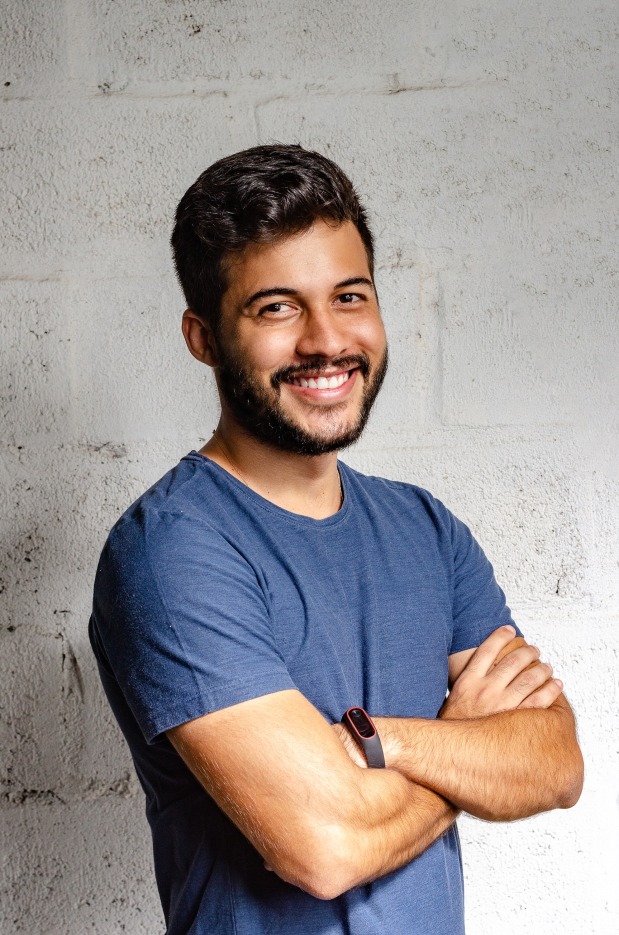
Photo by Italo Melo from Pexels
Over the Shoulder
Over-the-shoulder poses are usually fun and candid. They leave an impression that the photographer “snuck up on you” for a less staged feel. This style is perfect to show a relaxed and approachable personality.
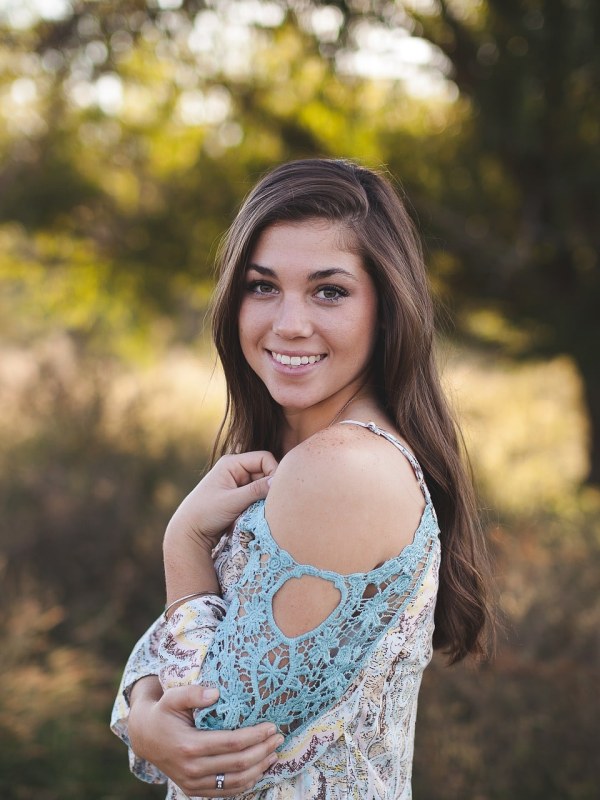
Lean Sideways
Similar to the over-the-shoulder pose, a sideways lean against a wall creates a laid-back vibe for your headshot. Just make sure that the wall is nicely lit and free of too many visual distractions.
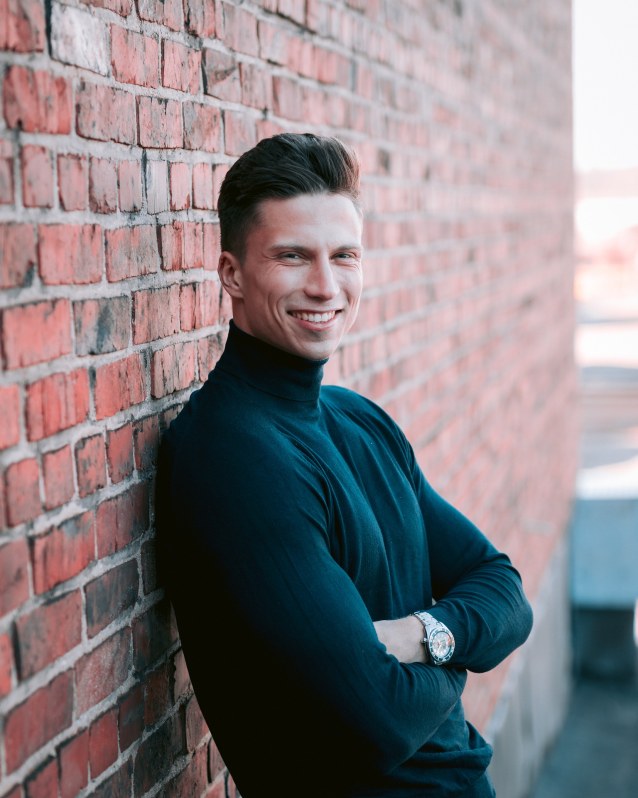
Image by josh95jk from Pixabay
Lean In
Sitting and leaning toward the camera can be a great way to appear relaxed during your headshot session. This type of pose is also perfect to hide a double-chin. (No judgment here!)
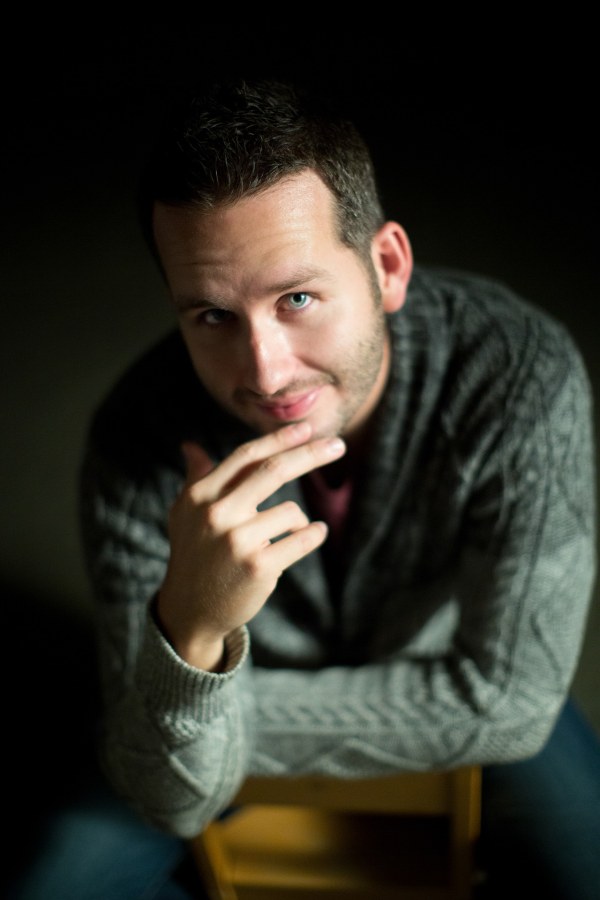
Image by jcaldigital from Pixabay
Choosing a Background
There’s a range of backgrounds to choose from, and they can help you achieve a more rounded headshot, and give more hints about your author brand. Here are the most popular types of photo backgrounds:
Plain White
Plain white backgrounds are proven and effective as a neutral way to place the focus on the portrait itself. Just be careful of not being overly lit.
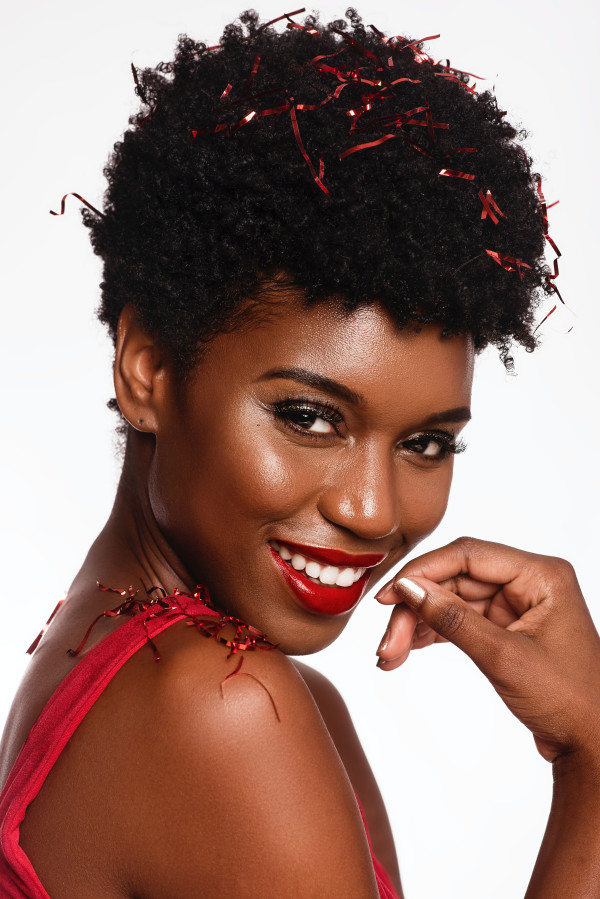
Photo by Adrienne Andersen from Pexels
Plain Black
Same as white, plain black will take distractions away from the subject, but it can also add some extra drama through contrast and deeper shadows.
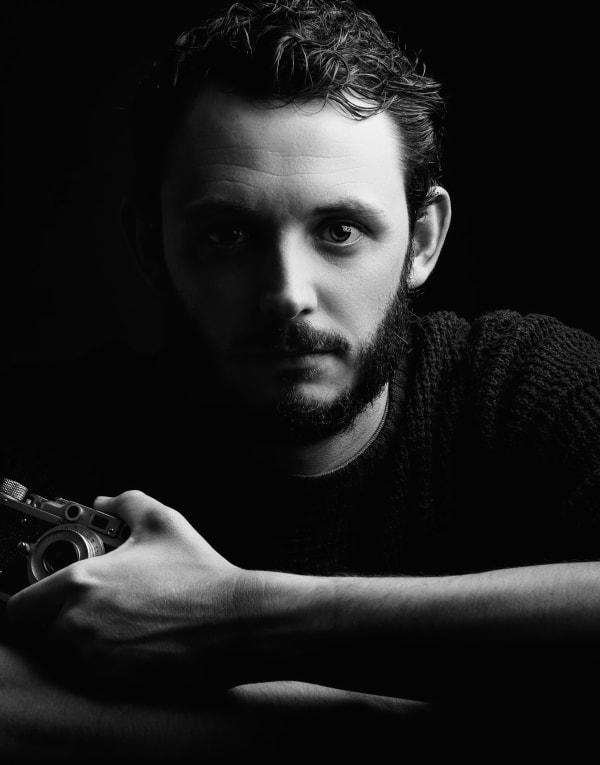
Photo by Alex Andrews from Pexels
Solid Color
Now, here’s a chance to put your brand color to work! Adding a splash of color can give your headshot some personality, and tie it in with your overall brand. One extra tip: Make sure the color of your background compliments your skin tone and your clothing.
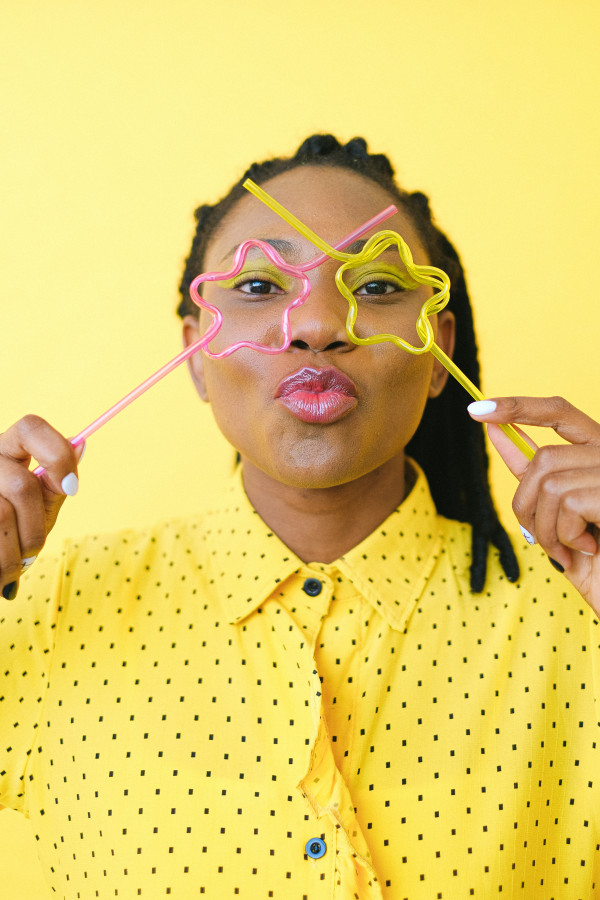
Photo by Anna Shvets from Pexels
Textured
You can create texture on your backdrop by mixing more than one color, or choosing a visually appealing material. Textured backgrounds can be very interesting, but don’t make them too interesting. Don’t be outshined by your backdrop!
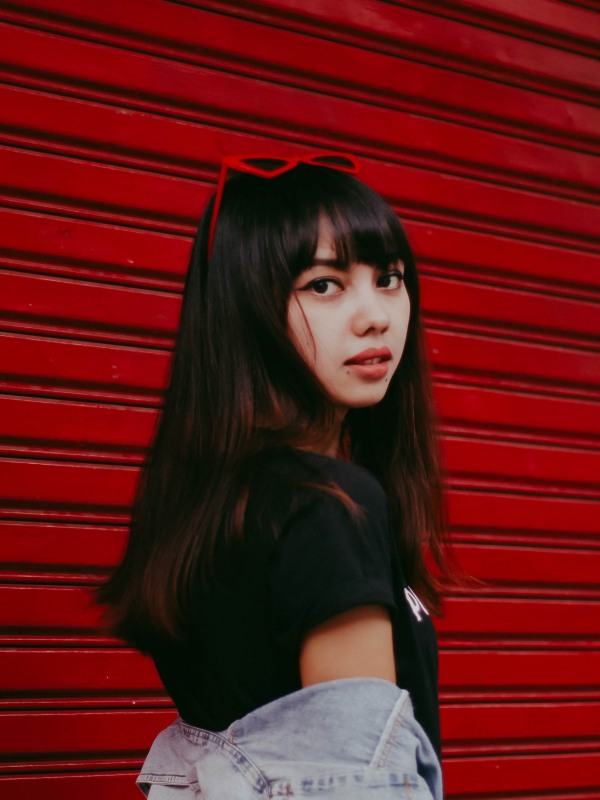
Photo by Deden Dicky Ramdhani from Pexels
Nature
Many authors love the feeling of openness and freshness only the outdoors can bring. These kind of backgrounds are also a fantastic branding opportunity if nature itself is prominent in your books, or your stories are heavily related to a specific scenery.
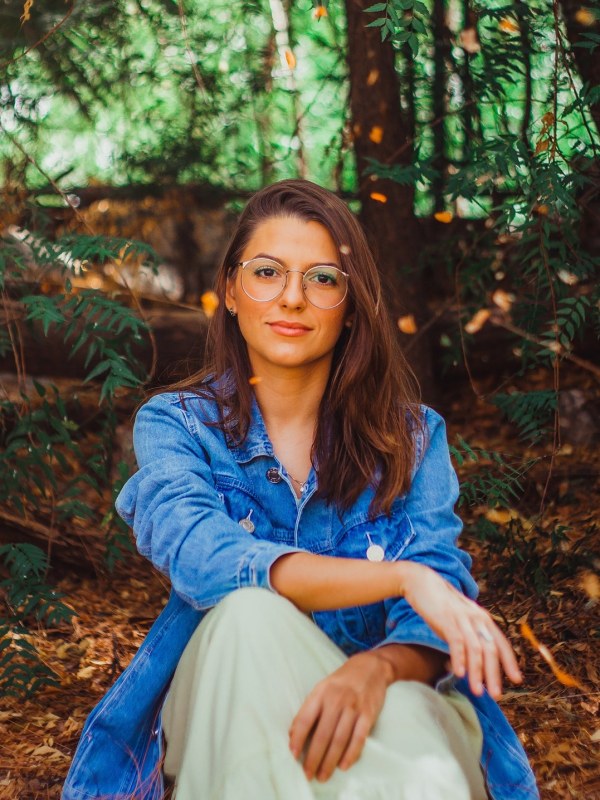
Image by karolinesara from Pixabay
Urban
Urban landscapes are hip and full of life. Any city will provide you with hundreds of intriguing possibilities that will, just as natural backgrounds, boost your brand if you are an author who explores metropolitan life. But beware! They can also be too busy. Choose carefully.

Photo by Italo Melo from Pexels
What to Wear
A top model sells the garment. You sell a promise—that you are to be trusted as a writer. Your choice of clothes for your headshot (and the kinds of accessories you use to either jazz them up or tone them down) says a lot about who you are and how you feel about yourself and others.
Your style should complement your author brand, not distract from it. It will influence readers when assessing how well you fit into the author role, and how deep your genre’s understanding goes. The better defined the connection between what you write and how you look like, the higher the chance your audience will place you as an expert. You’re an author, you better look the part!
Let’s take a look at some examples. Let’s say you’re a non-fiction author whose books are about making smarter financial choices. Which of this two styles would you say matches that description better?

Photos by mentatdgt and Karolina Grabowska from Pexels
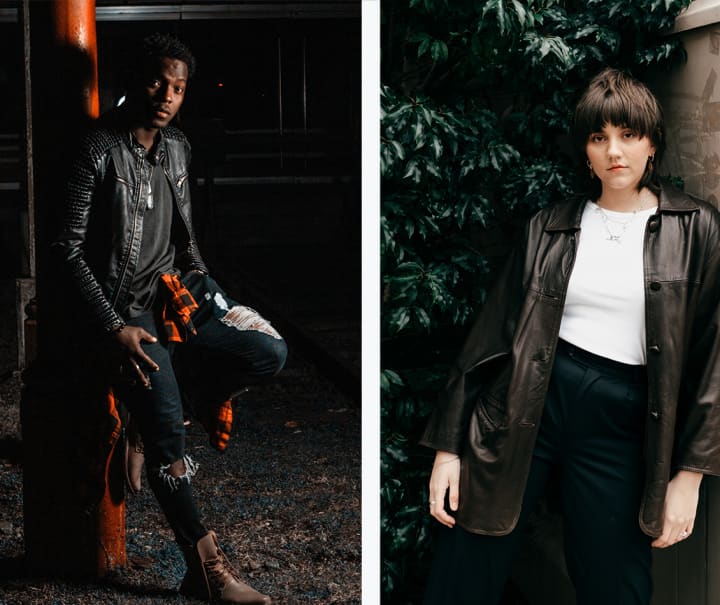
Photos by Lucxama Sylvain and Harry Cooke from Pexels
It’s a no brainer that the answer would be number 1. But wouldn’t the second styling be absolutely perfect if you wrote dark urban fantasy novels?
Even within the same genre, your author style can bring some nuances that will set you apart. Let’s say the following gentlemen were both thriller writers. Which one would you say writes spy stories set in the 1940s, and which has a contemporary, gritty, action-packed book series?
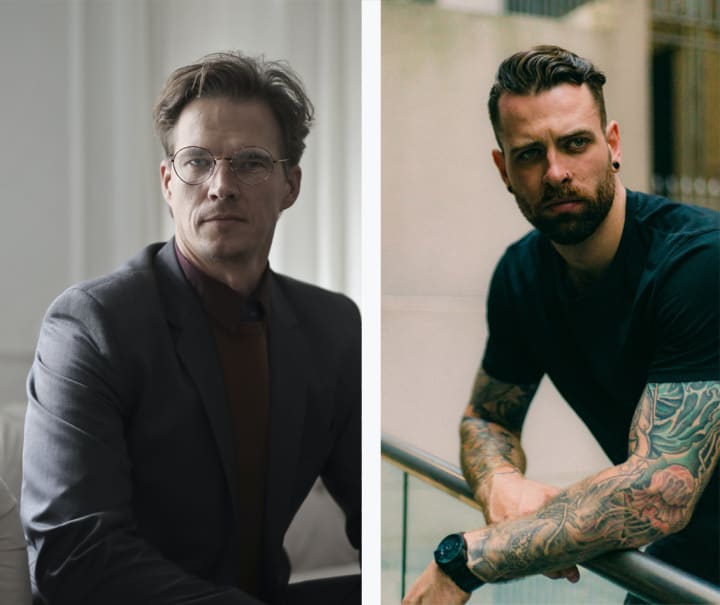
Photos by Andrea Piacquadio and Ralph Rabago from Pexels
And if these two ladies wrote romance, who would you point as the author of sweet stories set on a quirky little island? Who would be most likely behind a steamy millionaire romance plot in New York City?
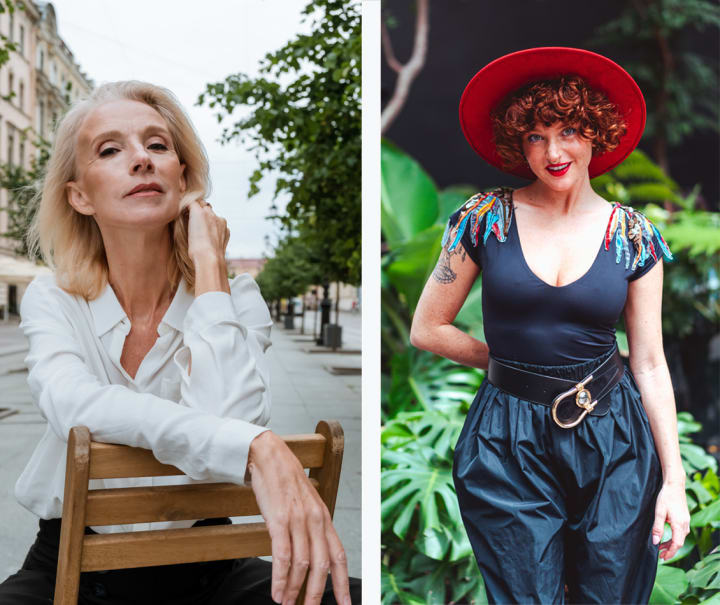
Photo by cottonbro and Los Muertos Crew from Pexels
We could be playing this game for hours, but you got the point. Also, you can do it yourself to find inspiration. Just go through a magazine or make a quick browse for fashion styles online, then try to imagine the models as authors. To which genre would their style lead? Are there any elements you could steal for your own author brand?
Before Your Photoshoot
-
Do your homework: To know the outcome you’d like to achieve, it’s best to do some research and save headshots you like for reference. Doing research will help you learn how to pose and what framing you like best. It may even inspire your clothing, hairstyle, or makeup choices.
-
Take a look at your peers: Analyze the headshots of successful authors in your genre. What do they have in common? How do they style themselves to match their niche? What sets them apart? Apply what you learn to your own brand.
-
Communicate with your photographer: Your photographer should know your author brand inside and out before taking the first picture. And it’s up to you to explain it as clearly as possible.
- Share what you want your headshot to achieve, how it should boost your brand, and how you’re planning to connect with your readers.
- Provide examples of headshots you like and tell your photographer why you like them.
- Show examples of headshots you don’t like so the photographer knows what to avoid.
Communication is key. The more information you provide ahead of time, the smoother your photoshoot will go, and the happier you’ll be with the results.
-
Take some mock-up photos at home: We all know it. Things can look very different through a camera lens. That smile you thought looked charming? It comes across as creepy. That outfit you love so much? Not so flattering any longer. Taking some sample photos at home can help you narrow your choices about pose, facial expression, and attire. Because if you don’t feel comfortable in the safety of your own room, how are you supposed to be in front of a pro?
-
Avoid drastic makeovers: You don’t need to get a brash new haircut, completely change your make-up, or throw half of your clothes through the window. Your author persona already exists within you. Don’t try to engineer it, let it come out naturally. Last minute changes to your appearance might make you awkward in your own skin—the opposite of what you need to convey.
-
Have a good night sleep: Rest will erase any form of stress on your face, and help you stay natural, relaxed, and focused during your photoshoot.
The Day of Your Photoshoot
- Listen to your photographer, but be assertive: If you’ve established a good working relationship with your photographer, everything should go smoothly. However, photographers will have suggestions based on their own expertise. Some of them will be great advice, but some might deviate from what you want to accomplish. Never forget you are in charge, and never be afraid to make an objection, as long as you remain appreciative, kind, and polite.
- Consider having a hair and make-up person around: Yes, this applies to men too! Photoshoots can be long and exhausting. The lights can make you sweat and make your forehead shiny. Your fantastic hair style might not hold forever. It’s always helpful to have a professional around who will make sure you look your very best in every single shot.
- Bring different clothing options: You will be grateful to have some extra material to choose from after the session. But narrow your choices to a minimum beforehand, this isn’t Vogue magazine!
- Relax and be natural: Your author headshot has one clear purpose—connect with your audience. Most authors prefer looking straight into the lens to create a more intimate and welcoming feel, but others would rather use their gazes to hint mystery, or build a cool ambience. How you use the camera is up to you, but remember that a good author headshot requires a candidness that a fashion editorial might not. Don’t over-stage it. Don’t force it. If something you’re doing feels dishonest, try something else. Readers are tough judges when it comes to fakery.
- Have fun!
Taking a Headshot at Home
Professional headshots can be expensive. If hiring a professional photographer isn’t within your current budget, there are ways to get a nice headshot on a dime (especially today that most phones have a neat HD camera and nicer lenses). Here are some tips to help you succeed:
- Master a camera app: To get better results,need to use an app that allows you to control basic elements such as contrast or exposure. If you get it right from the get-go, you will eliminate a lot of tweaking time with photo editing software later.
- Invest in a tripod: You may risk making warped angles if you go too low or high with your phone or camera, and blurry edges if you rely on a jittery pulse. A tripod will help you steady device and maintain it at a flattering eye level.
- Invest in additional lighting (if you’re indoors): Weird shadowing can kill a good headshot. A couple of studio or beauty lights (they don’t have to be super expensive) can be a lifesaver.
- Pick the right time of day (if you’re outdoors): Taking headshots under a full blown afternoon sun might not be the best idea. Same applies to going out too close to nightfall. If you’re doing a photoshoot outside, pick the time of day when the light is softer, and a location free from harsh shadows. We recommend mid morning or mid evening. Also, overcast days will make your life (and light) easier.
- Take more pictures than you need, and then some more: Lacking a professional eye means that you might get it wrong more often that you get it right. You will need lots of choices to sieve those gold nuggets floating in the stream!
- Ask for help: Every family and group of friends has a photography aficionado, and they might be willing to give you a hand, especially if you offer them a little compensation for their time and are willing to credit them for their work and link to their websites or online portfolios.
Examples of Great Author Headshots
Joe Abercrombie
Joe Abercrombie's books are grim, full of intrigue, and not for the faint of heart. Notice how his pose and expression challenge the reader, and how the headshot plays with light and shadow, just as he does in his writing.
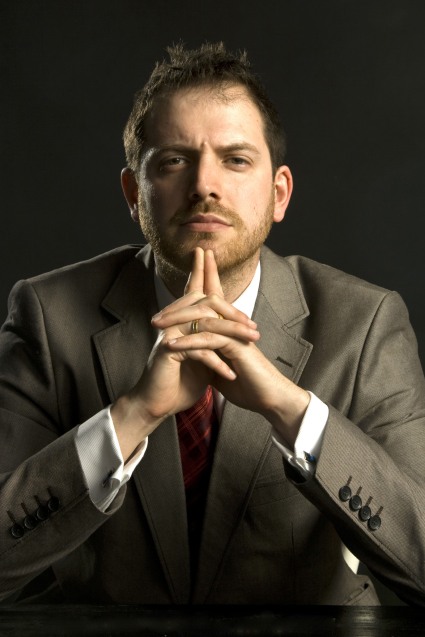
Jami Albright
Jami Albright is a romance author with a knack for comedy. Just as her rom-coms, her headshot exudes joy and warmth. Her expression is cheerful and her pose, relaxed. Notice how she keeps her arms down, which makes her more friendly and open, and how her outfit is not only very stylish, but also goes really well with the background.
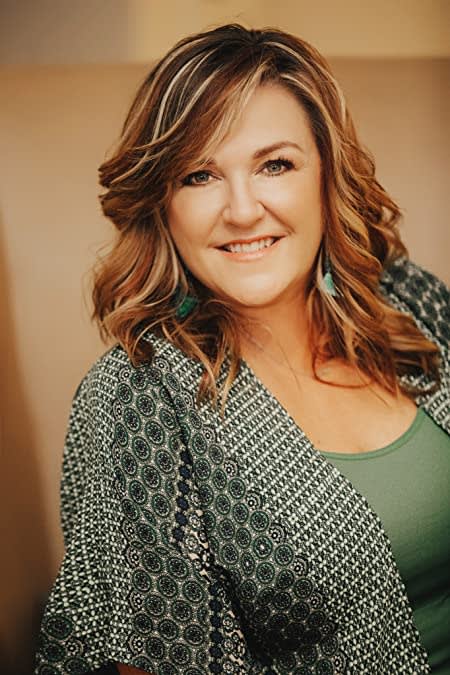
Neil Gaiman
Neil Gaiman's look is iconic: Dark clothes, and a very recognizable hairstyle that somewhat reminds us of his famous character The Sandman. In this headshot, he’s leaning in, which implies he wants to connect with the reader, but he’s also crossing his arms, which puts some distance. His expression is friendly, but mysterious. He welcomes you to his world, but wants to keep you guessing. And if you’ve ever read any of his books, all about this wonderful portrait makes total sense.

Brock Bloodworth
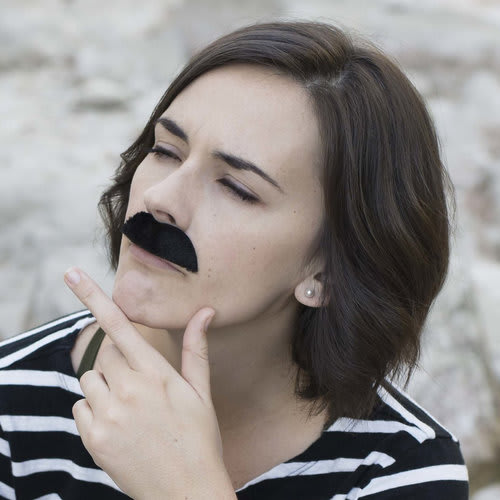
We love this headshot because Brock’s alter ego, author H. Claire Taylor, saw an opportunity to boost her comedy brand through a new pen name. She kept her readers guessing about who the mysterious Brock Bloodworth could be, only to later reveal she’d finally found him. We bet she gave more than one of her fans a chuckle when she shared this pic!